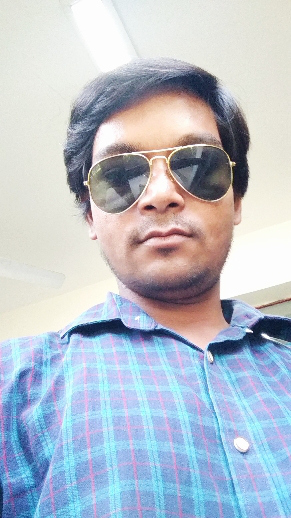Please Login To Continue
(Hindi)Interference from thin film
Lesson 8 of 17 • 7 upvotes • 7:32mins

Rajesh Kumar
Interference due to thin film. Parallel beam of light is incident on the film at an angle i as shown in figure. the wave is divided into two parts at the upper surface one is reflected and the other is refracted. This part divided into two parts one is transmitted out of the film and the other is reflected back. multiple reflection and refraction take place and a number of reflected waves as well as transmitted waves are sent by the film, the film may be viewed by the reflected light or by the transmitted light. in the case of transmitted light for normal incidence i is equal to zero. point B and D coincide, path BP is equal to DP and the only difference is the distance travelled by the wave DP is bc + CD is equal to 2 d. optical path difference between waves BP and DP interfering it is Δx=2µd,the same phase difference by the DP and SP or any consecutively transmitted waves. all these waves are in phase if phase difference ΔΦ=2nπ . n is Integer and 2µd=nλ. then constructive interference take place and the film is seen illuminated . and if Δx=2µd is equal to phase difference to ΔΦ=(2n+1)π and 2µd=(n+1/2)λ, consecutive waves are out of phase the illumination will be comparatively less because of interfering waves do not have equal magnitude. if white light used for constructive interference for certain wavelength and which colour will be strongly transmitted . in the case of destructive interference poorly transmitted gives coloured appearance of the film. in the case of reflected wave when we used again the optical path difference between the reflected consecutive waves is equal to Δx=2µd in the case of reflection, illumination minimum in reflection maximum and minimum condition in reflection case is just opposite that of the transmission case. because light goes from rarer to denser medium then in the case of reflection a sudden change of phase of 2nd wave by π.
(Hindi) Light Wave: Class 11 NCERT
17 lessons • 2h 53m
1
Light wave:Course Overview (in Hindi)
4:24mins
2
Light:Wave or Particle (in Hindi)
6:52mins
3
The Nature of Light Wave Part :01 (in Hindi)
7:13mins
4
The Nature of Light Wave Part:02 (in Hindi)
6:32mins
5
Huygens Principle (in Hindi)
12:34mins
6
(Hindi) Young double slit experiment
11:38mins
7
(Hindi)Optical path
10:04mins
8
(Hindi)Interference from thin film
7:32mins
9
(Hindi)Fresnel Biprism
9:08mins
10
(Hindi)Diffraction of light: Fraunhofer Diffraction
13:05mins
11
(Hindi) fraunhofer diffraction by circular aperture,Fresnel diffraction at a straight Edge
10:48mins
12
(Hindi) Limit of resolution, Scattering of Light,Rayleigh Criterion/ Law
14:21mins
13
(Hindi) Polarization of light
10:33mins
14
Polaroids, Polarization by reflection and refraction Polarization by Scattering
12:28mins
15
(Hindi) summary light waves-01
10:17mins
16
(Hindi) summary of light wave - 02
12:52mins
17
Numerical based on light waves
13:16mins